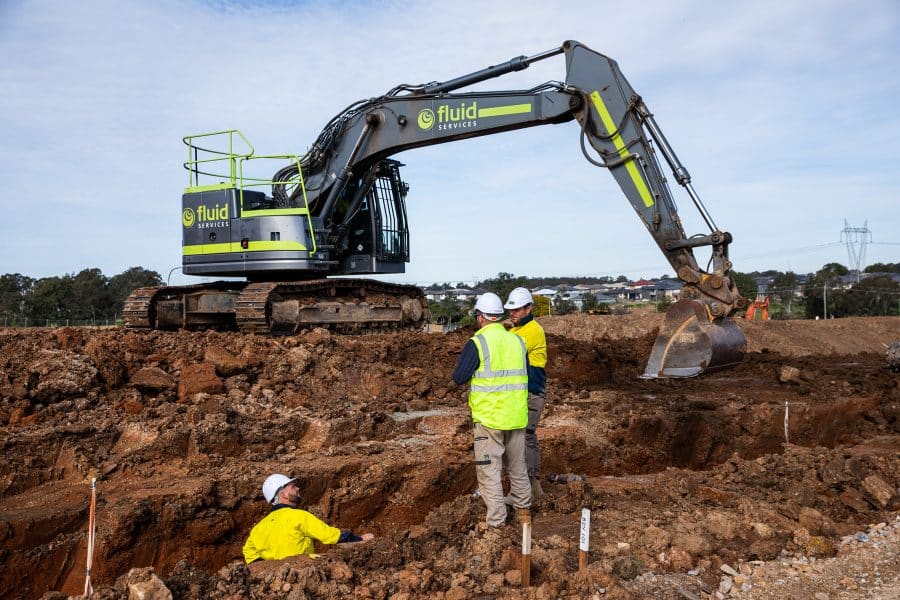Guide to Wastewater & Sewers
Wastewater is an unavoidable part of life, but a bad sewer system can make managing it a major headache.
Here, we will cover the key aspects of wastewater management, sewer main connection requirements and more. Read on to learn what wastewater is and why it should be handled with care.
What Is Wastewater?
Wastewater is just what its name implies — water that has been used and contaminated in some way and is unfit for any additional uses unless it’s treated. However, the term is often a catch-all for a variety of non potable water types, such as the following:
- Sewage – One of the most well-known types of wastewater is raw sewage. Typically, the term sewage is used to refer to human waste as opposed to that of animals.
- Greywater – This type of wastewater is less hazardous than sewage and can even be reused in some cases. Greywater comes from households and can be thought of as the water that comes from everything except toilets.
- Irrigation Runoff – When large farms are irrigated, the water that seeps out of the soil and runs downhill can find its way into other water systems, carrying loads of pesticides, animal feces and other pollutants along with it.
- Industrial Wastewater – From massive metal treatment and mining operations to industrial laundries servicing billions of pounds of fabric per year, the variety and scope of wastewater produced by manufacturing businesses makes careful management a must for environmental preservation.
Wastewater treatment can take many forms. The specific option used depends mostly on the type of wastewater being handled. A number of unique reactors are used in the treatment of wastewater, including membrane reactors that filter foul water through a series of microporous membranes and active substances to produce clean water.
Sewer Main Connection Requirements
Connecting to a sewer main is not quite as simple as popping your pipe onto a bigger one. Checking in with septic service providers in your area first is a must.
Connecting to the Sydney Water sewer main is a multi-part process that begins with an application for service. Building plans must be pre-approved by Sydney Water in order to make use of their sewer system. Working with a qualified consultant can help simplify this process as they are well-versed in the steps required.
The main connection to Sydney Water’s sewer can be attached to a variety of system designs on your property.
Accomodating a sewer junction or any other aspect of your wastewater system’s design is fine so long as it attaches to Sydney Water’s single point of connection as per their requirements. Beyond Sydney Water’s point of connection, wastewater from your system passes through a boundary kit and into their system.
Main Sewer Line Replacement Options
Sewer lines can last for a very long time, but they don’t last forever. Particularly in older homes and buildings, a sewer line replacement could be necessary to ensure that your wastewater is collected and channeled safely. There are multiple options for this kind of an installation, including:
- Pipe Bursting – When this sewer line replacement technique is utilised, existing pipes are literally burst by a special cable and conical bursting attachment as new pipes are pulled into place behind it.
- Trench Digging – This is the traditional approach to sewer line replacement, involving the digging of trenches and a comprehensive pipe-laying process.
For sewer main repair, there are additional options worth considering, such as cure in place repairs. This repair technique involves running a special pipe liner through existing wastewater pipes and adhering it in problem areas. Great for patching holes and reconnecting broken pipes from the inside, such a liner is also used in a similar process known as inversion, which moves it through an existing pipe system with compressed air.
A sewer backflow preventer installation is an important preventative measure worth considering during the planning phase of any wastewater installation or repair process. These devices are special valves that help stop contaminated water from the city sewer main from entering your system. Although such occurrences are relatively rare, when they do happen, they can be both damaging and immediately hazardous to your health.
Sewer backflow can happen when a sewer system begins to decay or suffers damage without being repaired or replaced immediately. The overall sewer backflow preventer installation cost is worth the peace of mind that such a device can give you.
Understanding the role that wastewater systems play in protecting your property and the environment, plus how they are designed and installed, can be useful if you’re planning construction or renovations. The information covered here should help guide your decisions throughout the process.









